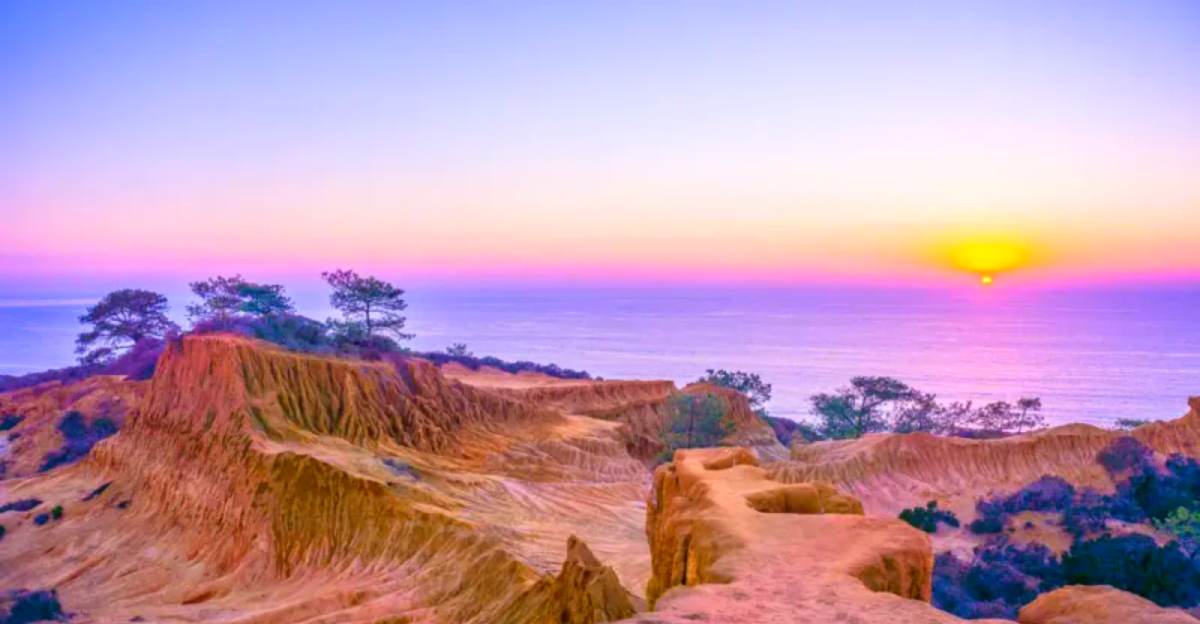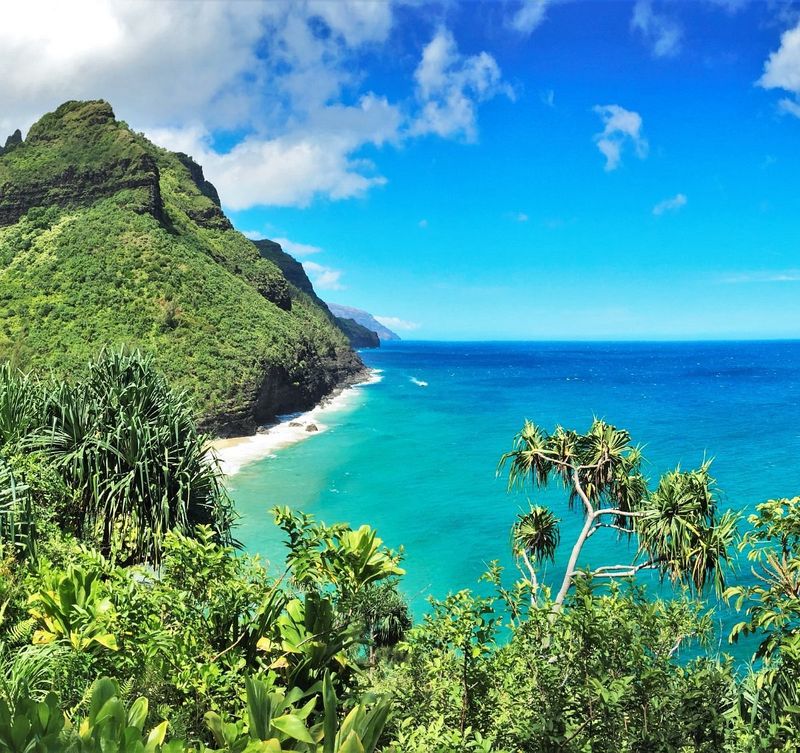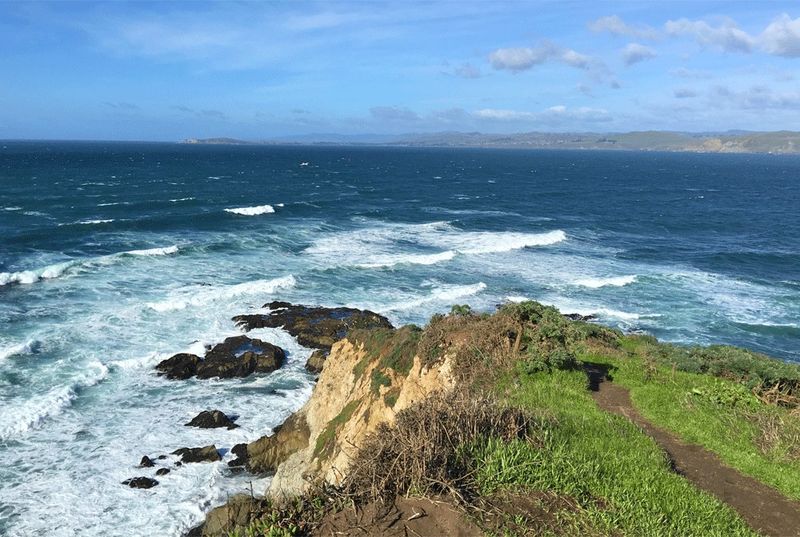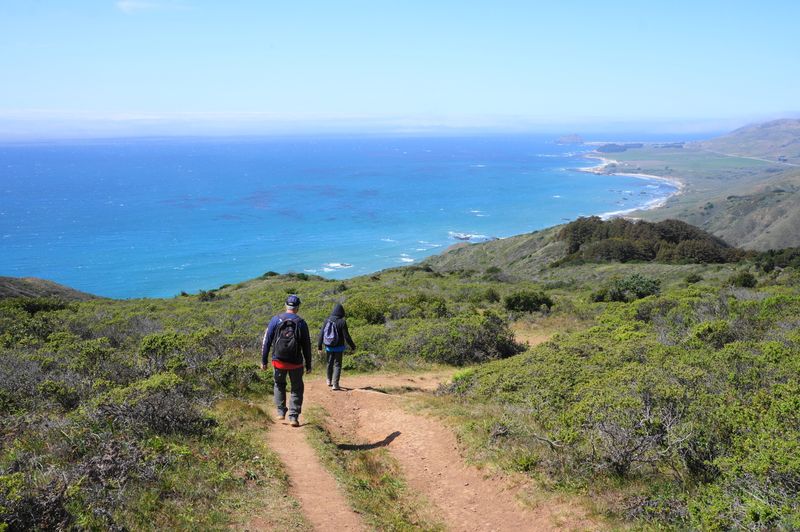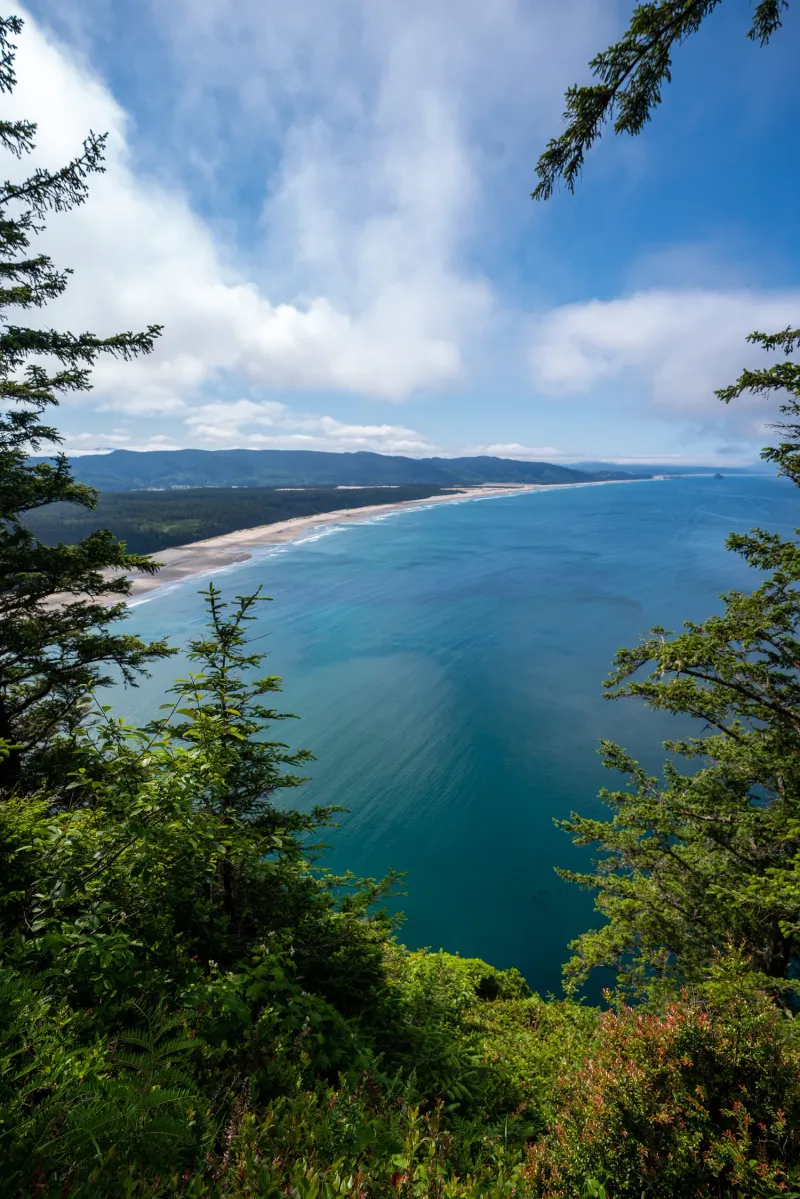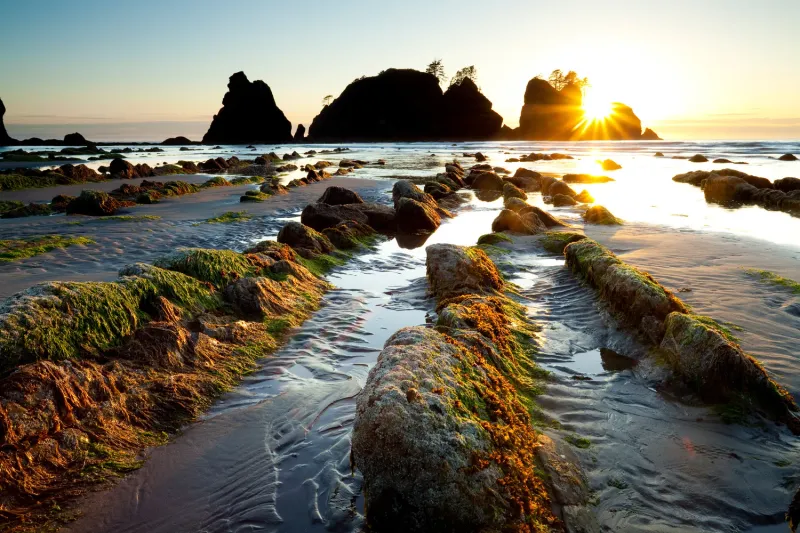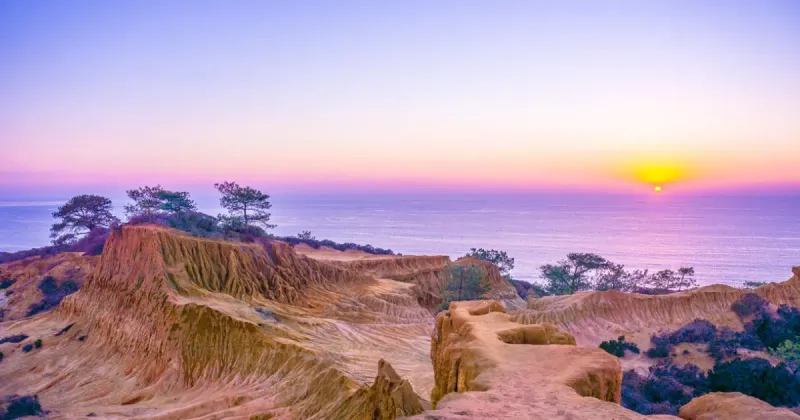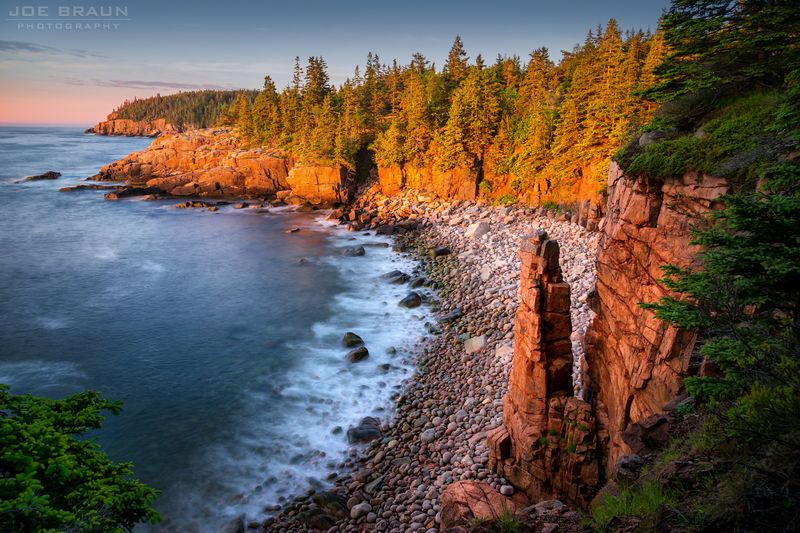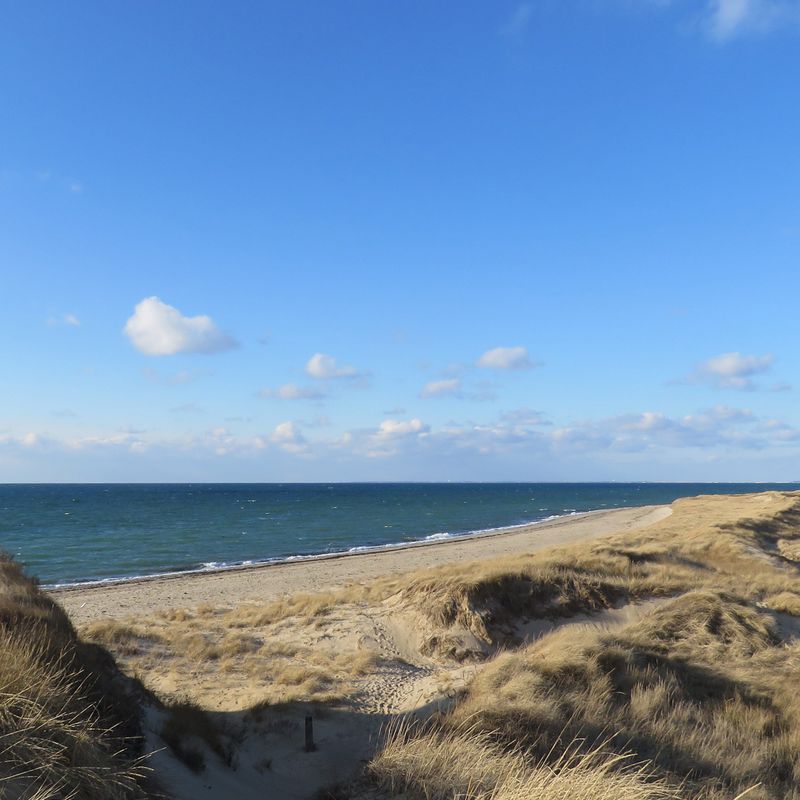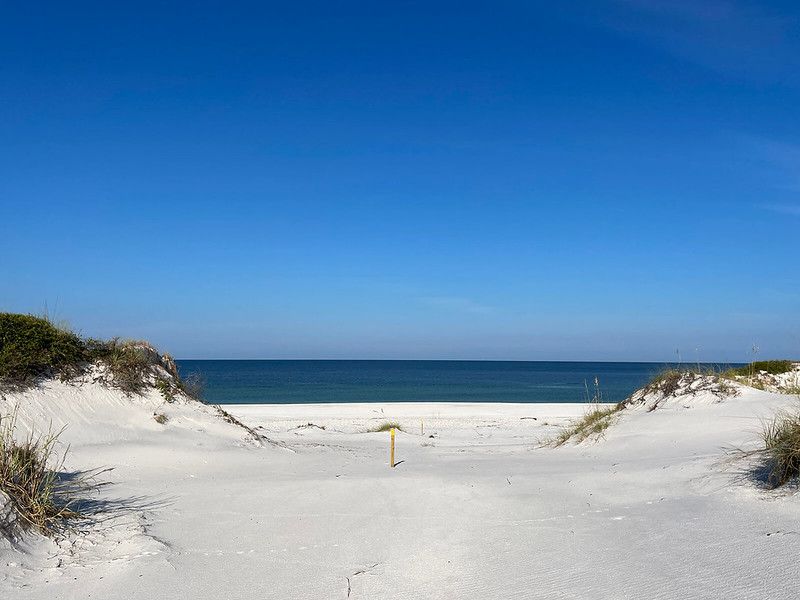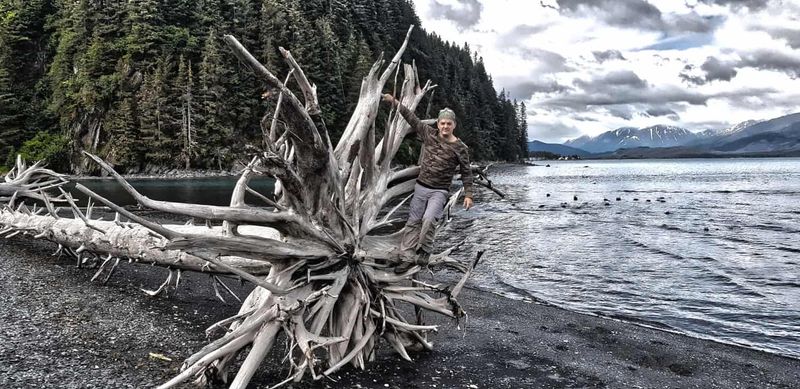America’s coastlines offer some of the most breathtaking hiking adventures you’ll ever experience. Walking along sea cliffs gives you front-row seats to crashing waves, dramatic rock formations, and endless ocean horizons. Whether you’re exploring the rugged Pacific Northwest or the sunny shores of Hawaii, these trails combine natural beauty with the thrill of heights and the salty breeze of the sea.
1. Kalalau Trail (to Hanakāpīʻai), Nā Pali Coast — Kauaʻi, Hawaiʻi
Cathedral cliffs rise thousands of feet above turquoise water, creating one of Earth’s most jaw-dropping coastlines. From the very first steps, you’ll feel like you’ve entered a lost world where mountains meet the sea in spectacular fashion.
The 4-mile round-trip journey to Hanakāpīʻai Beach rewards hikers with white sand, powerful surf, and views that belong on postcards. Red dirt trails wind through tropical vegetation while waves crash far below.
Before you go, remember that all non-resident visitors must book Hā’ena State Park reservations for parking or shuttle access. Day hikers don’t need overnight permits for this beach destination, but plan ahead—spots fill up fast during peak season.
2. Tomales Point Trail, Point Reyes National Seashore — California
Walking out onto this narrow peninsula feels like standing on the edge of the world. Pacific waves pound both sides of the land, creating a symphony of surf that follows you for nearly 10 miles.
Tule elk roam freely across golden grasslands, often stopping to watch hikers with curious eyes. Spring brings carpets of wildflowers—purple lupine, yellow mustard, and orange poppies painting the headlands in brilliant color.
Wind can whip across this exposed route, especially after winter storms, so layers are essential. Always check Point Reyes’ trail advisories before heading out, as muddy conditions and closures sometimes affect access to this Phillip Burton Wilderness area.
3. Bluff Trail Loop (Bluffs–Ridge–Panorama), Andrew Molera State Park — Big Sur, California
Big Sur’s magic comes alive on this network of trails that weave through meadows and along clifftops. Golden grasses sway in ocean breezes while waves crash against rocks hundreds of feet below your boots.
Loop options ranging from 6 to 8 miles let you customize your adventure, combining the Bluff, Panorama, and Ridge trails for maximum coastal exposure. You’ll gaze across the Monterey Bay National Marine Sanctuary, where whales and dolphins often break the surface.
Andrew Molera remains refreshingly undeveloped, preserving that wild Big Sur feeling visitors crave. Check seasonal conditions before you visit—the Big Sur River crossing can swell after winter rains, making passage tricky or impossible.
4. Cape Lookout Trail, Cape Lookout State Park — Oregon Coast
Dense coastal forest opens suddenly to reveal a knife-edge headland stabbing into the Pacific. Standing at the cape’s tip, you’re surrounded by ocean on three sides, with nothing but blue water stretching to the horizon.
During migration seasons, gray whales pass close to shore, spouting and breaching in the calm waters below. The 5-mile round-trip journey takes you through old-growth Sitka spruce before emerging onto windswept promontories with vertigo-inducing drop-offs.
Oregon’s famous rain makes roots and rocks slippery year-round, so tread carefully on the forested sections. The trail connects with longer segments of the Oregon Coast Trail for those wanting extended adventures along this magnificent shoreline.
5. Shi Shi Beach to Point of the Arches, Olympic National Park — Washington
Sea stacks rise from the surf like ancient sentinels, creating one of the Pacific Northwest’s most photographed coastlines. At low tide, you can explore tide pools teeming with starfish, anemones, and crabs among the rocky arches.
This 8-mile round-trip adventure crosses Makah tribal land before entering Olympic National Park, requiring two separate permits—a Makah Recreation Pass and, if camping, an ONP wilderness permit. Sunset here ranks among Washington’s finest, painting the sea stacks in gold and crimson.
Tide timing is crucial for safe passage around headlands and accessing Point of the Arches. Always carry a current tide table and plan your turnaround time carefully to avoid getting trapped by rising water.
6. Torrey Pines State Natural Reserve Trails — San Diego, California
Twisted, wind-sculpted pines cling to eroded sandstone cliffs in shades of cream and rust. These rare trees grow naturally in only two places on Earth, making every step here feel like walking through a living museum.
Short trails like Razor Point and Beach Trail can be mixed and matched, creating custom hikes from 0.7 to 2.3 miles with constant ocean vistas. The blue-on-blue palette—azure sky meeting cobalt sea—creates stunning photo opportunities just minutes from urban San Diego.
Fragile sandstone means trails sometimes close after rain to prevent erosion damage. Always check the reserve’s status before visiting and stick to designated paths to protect this unique ecosystem for future generations.
7. Ocean Path, Acadia National Park — Maine
Pink granite ledges glow in the morning light as Atlantic waves explode against the rocky shore. This 4.4-mile path from Sand Beach to Otter Point ranks among America’s most accessible coastal hikes, perfect for families and casual walkers.
Thunder Hole lives up to its name when waves surge into a narrow chasm, creating booming sounds and geysers of spray. Otter Cliff rises 110 feet straight from the sea, offering dizzying views down to churning water.
The trail starts as packed gravel and concrete, becoming rockier as you progress southward. Popularity brings crowds, especially during summer and fall foliage season—arrive early morning or visit during shoulder seasons for a more peaceful experience.
8. Great Island Trail, Cape Cod National Seashore — Massachusetts
Cape Cod’s wild backside reveals itself on this peninsula adventure through rolling dunes and salt marshes. Unlike the Cape’s busy beach towns, Great Island feels delightfully remote, with only wind, waves, and shorebirds for company.
Distance options range from 3.9 to 8.8 miles depending how far you push toward Jeremy Point Overlook. Bay panoramas unfold in every direction, with tidal creeks snaking through golden marsh grasses.
Budget 3 to 5 hours for this journey and bring sun protection—shade is scarce on this exposed route. If you’re heading all the way to Jeremy Point, check tide schedules carefully, as water can cut off the farthest reaches during high tide periods.
9. Wilderness Preserve Trail, T.H. Stone Memorial St. Joseph Peninsula State Park — Florida (Gulf of Mexico)
Sugar-white sand dunes tower above emerald Gulf waters, creating Florida’s most spectacular beach wilderness. This narrow peninsula juts into the Gulf, offering nearly 360-degree water views from some of the highest dunes on the Panhandle.
Choose your own distance along beach and dune trails, tailoring the adventure to your energy level. The truly wild character sets this place apart from Florida’s developed beaches—you might encounter only sea turtles and shorebirds for miles.
Seasonal wildlife advisories protect nesting sea turtles and migrating shorebirds, so check the park’s official page before visiting. The Wilderness Preserve areas require planning, but the reward is experiencing Gulf Coast nature at its most pristine and untouched.
10. Caines Head Coastal Trail, Caines Head State Recreation Area — Seward, Alaska
Coastal rainforest gives way to broad beaches where the North Pacific stretches toward the horizon. This Alaskan adventure combines stunning Resurrection Bay vistas with fascinating WWII history at Fort McGilvray, perched on the headland.
Distance varies from 4 to 13-plus miles depending on your turnaround point and tide conditions. Sections between Lowell Point and Tonsina Creek are tide-dependent, meaning you’ll need to time your passage during low water windows.
Consulting official maps and tide tables before departure isn’t optional—it’s essential for safety. The reward for careful planning includes witnessing Alaska’s dramatic coastal scenery, exploring military ruins, and possibly spotting whales, otters, and bald eagles along the shore.
